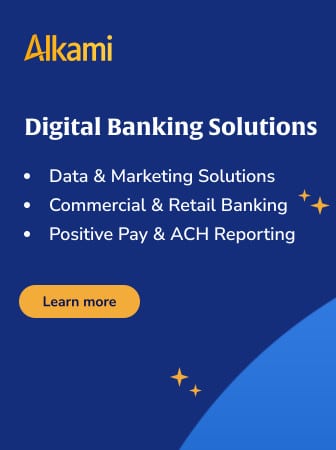Some search engine optimization tactics, like matching content to user intent and building quality backlinks, have stood the test of time. But many SEO tasks that used to be critically important no longer deliver meaningful impact.
In fact, your ranking may even be harmed by SEO practices that were common as little as four years ago. We’ve unpacked some key developments in search algorithms to help you understand which tactics you should move away from in your enterprise SEO strategy (if you haven’t done so already).
1. Deploying Meta Keywords Is So Yesterday — And No Help
Keywords, which search algorithms use to interpret searcher intent, remain the backbone of SEO. But meta keywords, once an integral component of great SEO, have grown all but irrelevant.
Meta keywords are an HTML tag that aims to communicate what a page is about. Once upon a time, they were absolutely necessary. And it was even possible to game the system, so to speak, and stuff your pages full of meta keywords to boost your rank.
Around ten years ago, though, Google modified its algorithm to penalize pages that spammed the meta keyword field. With further evolutions in the algorithm, you could be penalized if your meta keywords didn’t also appear in the body of the page. Later algorithm changes depreciated meta keywords even further.
Today, meta keywords don’t meaningfully influence a page’s ranking. It’s not a big deal to not use them, so why invest the energy?

Why Industry Cloud for Banking?
PwC’s Industry Cloud for Banking helps deliver personalized products and services that today’s customers expect.

Accelerate Time-to-Market with Rapid Implementation
Create a sustainable competitive advantage with faster time to market by drastically reducing implementation time.
Read More about Accelerate Time-to-Market with Rapid Implementation
2. Not Linking Externally Will Hurt You
Back in the day, it was conventional wisdom not to use external links because they would pass “authority” out of your site. These days, however, you need to link externally to add credibility in the eyes of the algorithm.
Links help search engines understand that you have valid content that can be backed up by outside sources. It is possible to pass authority, and site visitors, out of your page if you have too many outbound links.
Is there an optimal number of external links per page? As with most things SEO, you should strive to do what’s best for the user. Still, aim to link to no more than two or three external sites on a page, especially if the page doesn’t have a lot of inbound links.
Don’t be afraid to link externally — but do use common sense.
Read More:
- 4 Keys to Improving Search Performance for Banking Websites
- 12 Common SEO Mistakes Financial Marketers Make
- Google Says Financial Institutions Need Better Content on Their Websites
3. Stuffing Page Content with Keywords Looks Suspicious to Search Engines
Just as meta keywords can be overused within a page’s HTML, so too can ordinary keywords be overused in the page’s body copy. The readability of the page content is far more important than the repetitive use of keywords, and algorithms take into account page content that is clear and readable.
Extreme abuse of keyword density is known as “keyword stuffing.” It used to be very common. When search algorithms were simpler, adding more keywords generally led to a higher relevance score for the keyword (topic) in question. Now, though, you can expect to throw up a red flag with the algorithms if you supersede 5% to 7% keyword density.
And even that range is extremely high. The only way you’d get close to that level of density is if your competitor pages have it — and you’re not being outmatched in terms of backlinks, technical elements or domain authority. Generally, it’s best to try to stay in the 1% to 2% density range; but once again there is no precise number and every page should be handled on a case-by-case basis.
4. Adding ‘Nofollow’ Tags to Internal Links is a Mistake
“Nofollow” and “dofollow” are pieces of HTML code you can add to the end of a link. Search crawlers treat links as dofollow by default — meaning that unless you specifically tag a link as “nofollow,” crawlers will treat it as “followable.”
Meanwhile, nofollow links get ignored by crawlers to the extent of passing “authority.” Five or so years ago, it was a known practice to code internal links – i.e., those to other pages on your domain — as nofollow. The idea was to keep your pages from cannibalizing each other’s “SEO authority.”
This approach doesn’t make sense anymore. In fact, Google completely ignores these dofollow and nofollow actions when it comes to internal links. So, they’re basically unneeded code.
At the same time, you don’t want to add too many internal links. Think from a user perspective: very rarely do tons of links provide a good user experience. Header and footer links are fine, as are a few right-rail links (e.g. related articles). Within your body copy, though, aim to add no more than two or three internal links per page.

5. Never Take a ‘Black-Hat’ Approach to Building Links
A long time ago in this space, black-hat tactics, or actions against search engines’ terms of service, were a highly effective means of link-building. Essentially, there were two strategies you could take: create websites for the purpose of link building, or start out with a legitimate website and then pivot to selling links.
Link-building becomes “black hat” when a site or “directory” exists only to sell links — a faux pas in today’s SEO world, and something that Google is explicit about prohibiting.
Today, Google’s algorithm has evolved to the point that it can catch these kinds of sites more easily. And there are plenty of legitimate means of building links, such as creating content that’s sticky enough to get picked up, as well as sharing content via newsletters and social media.
Is that to say that black-hat link-building is gone entirely? No — there are still many private blog networks (PBNs) that exist for this purpose.
But Google is getting smarter and smarter about catching bad actors. If you have a legitimate site, it simply doesn’t make sense to leverage PBNs and other black-hat link building tactics.
Search engine algorithms are continually evolving to improve the user experience and to provide an overall higher quality of featured content. While keeping up with these changes can be exhausting, understanding how the overall tactics are evolving will keep you from wasting time, or worse, negatively impacting your site, and will improve your traffic.







